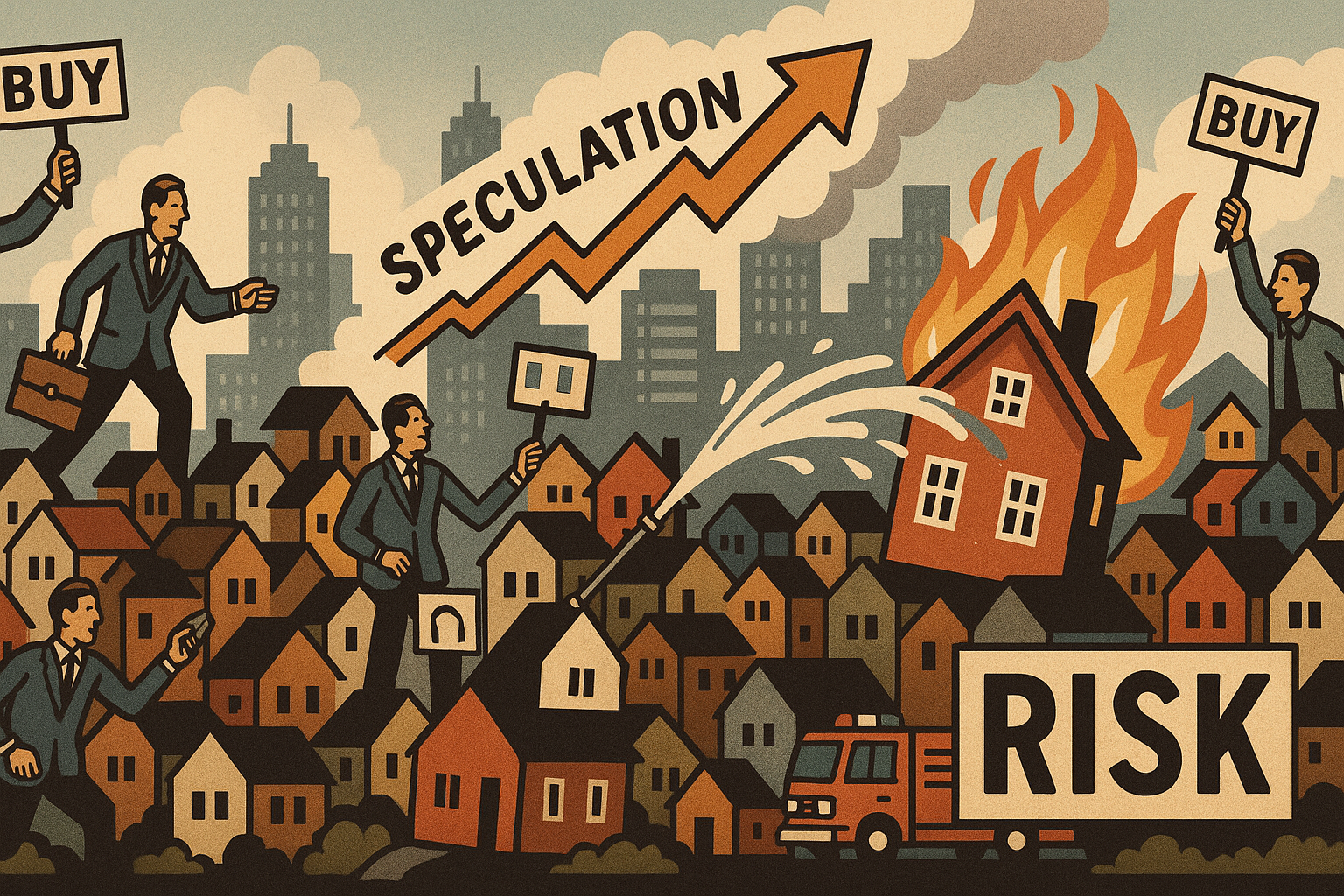Stable

In this week's blog, after the wild theatre of the last few weeks in the markets, we return once again to the simple asset class that underpins our sector, the UK residential housing market. In a series of pieces, we will take a closer look at the three main aspects that most broadly impact the success of our proposition: the value of UK housing stock, the health of the development sector that creates our housing stock, and the public's ability to acquire the stock. All of these factors contribute to the overall health of a functioning market. If you were to run the economic equivalent of an MOT, you would probably discover that they don't always correlate or move in sequence with each other or fit into a digestible narrative; there are no binary outcomes with something as complex as this, however, how these aspects subtly interconnect with each other, and it's something we will seek to unpack to gauge a deeper understanding.
Starting with the value of the housing stock, the IMF's warning about the UK being among the hardest-hit economies in the global trade war is a news story that may have significant implications across all sectors; slashed growth forecasts and rising inflation have created a challenging macroeconomic environment, potentially dampening both borrower and investor confidence across the world, and it's something it would be ignorant not to address head-on, nothing is more bearish than inane bullishness without respite or reason. The key element to monitor is any evidence of a struggling housing market, which is directly correlated with these macroeconomic events. Looking at the data, initially via the RICS UK Residential guide, that's not what we are seeing. The market is broadly flat, with buyer enquiries dipping post SDLT changes as projected, and lettings demand has picked up once again. Upon closer examination of the projections, the three-month sales expectations mentioned in the report indicate a further decline in activity over the near term. However, the outlook is not quite as downbeat, with a net balance of +11% of survey participants expecting sales volumes to rise.
So, where is the more profound thought in this, the deeper take on the data? The obvious thought process is that this is an asset-driven model that relies on house prices continuing to rise indefinitely, and a perceived inability to solve the housing deficit ensures that, thus, is the ironic nature of the proposition, feeding on its own tail like some fintech Ouroboros. However, that's too obvious and counterproductive for the economy. Yes, strong house price growth is a fundamental driver of peer-to-peer because it enhances the value of collateral, reduces lender risk, and increases borrower confidence; however, the counter-narrative here, the more profound thought, is flat house prices growing in a controlled and stable way, are highly and if not more beneficial for peer-to-peer, offering a stable and predictable environment for both lenders and borrowers alike, with no downside of a distortion of asset values created by the nations failure to build.
If the housing deficit isn't addressed adequately, overvaluation and bubble-like environments will emerge, distorting leverage estimations across lending markets and creating undue risk. It will also stretch margins for developers, as acquisition costs will front-load borrowing risks onto projects, weakening their viability. The sweet elixir of numbers rocketing up may be forever tempting; however, capital preservation is key here, and a better-functioning market always beats a ballooning market on a long enough time frame. Unlike volatile markets, where rapid price swings introduce uncertainty and risk, a flat market supports consistent property valuations, enabling more accurate loan-to-value assessments and prudent lending decisions. Out-of-control house price growth can also fuel speculative behaviour; we have seen this in previous market cycles. Operating in an environment of excess becomes more complicated, as judgments become skewed. Moreover, higher house prices can slow overall transaction volumes, as fewer people can afford to buy or invest in properties. This dampens borrower demand and limits the supply of quality lending opportunities, reducing platform activity and investor returns.
Compared to unstable prices, stable prices often mean reduced competition and lower acquisition costs, making it easier for borrowers to identify undervalued opportunities and maintain healthy profit margins. For P2P platforms, this translates into a higher quality loan book, fewer issues, and more sustainable growth across the ecosystem.
So this is potentially where we will see two of the factors mentioned become uncorrelated: a global trade war will damage all participants, and it would be foolhardy to suggest otherwise; however, the success of the housing market and the returns available through participation in all its various facets, don't necessarily rely on constant high volume growth year after year, and perhaps a corrective path, at least for a time, is the healthier path.
Invest & Fund has returned over £300 million of capital and interest to lenders with zero losses, showing the rigour that governs our business.
To take maximum advantage of this robust and exciting asset class, please visit www.investandfund.com
Don't invest unless you're prepared to lose money. This is a high-risk investment. You may not be able to access your money quickly and are unlikely to be protected if something goes wrong. Take 2 minutes to learn more.